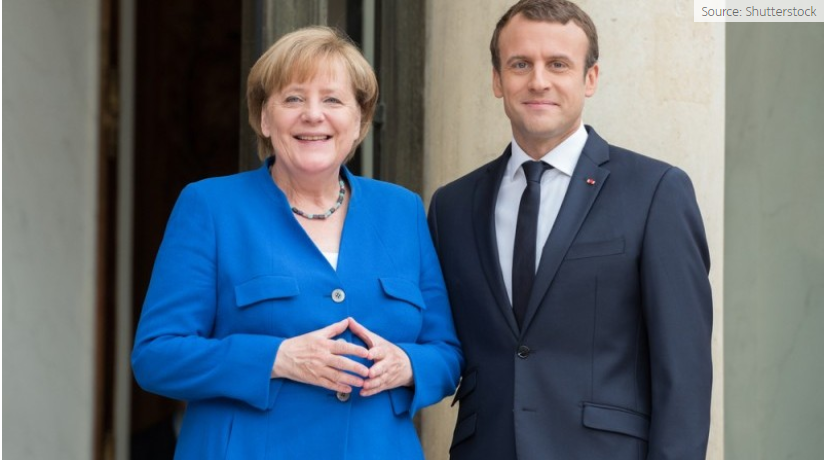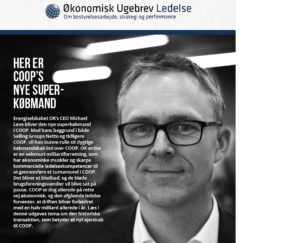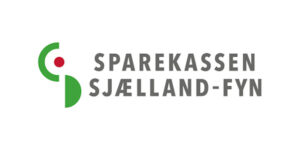ABN Amro gennemgår forslagene til en genopbygningsfond i EU,men ifølge banken kan det ende med, at EU-kommissionen vinder med sit forslag. Mens Frankrig og Tyskland kun vil bruge fonden til at yde kontanthjælp til de coronaramte land, og mens de fire sparelande kun vil yde lån, vil kommissionen lave en fond med kombinerede lån og direkte støtte. Til gengæld vil kommissionen have en fond, der er tre-fire gange så stor som i det fransk-tyske forslag – nemlig på 1,5 – 2 trillioner euro mod en halv trillion.
Uddrag fra ABN Amro:
Global Daily – Comparing EU Recovery Fund proposals
Euro Macro & Rates: EC may stick to its original plan and ignore the other two proposals – The Frugal Four joined the game just before the European Commission’s publishes its proposal for the EU Recovery Fund today. Austria, Denmark, the Netherlands and Sweden published a counterproposal for the Recovery Fund’s structure last Saturday, in response to the Franco-German proposal.
The Frugal Four’s and Franco-German proposal, as well as previous statements by the EC, all point at heavy frontloading under the MFF 2021-2027, but differ significantly in terms of size, allocation, funding and implications for growth and national debt levels.
Differences in size – The Frugal Four do not mention a specific amount, but instead call for a ‘needs assessment’ to determine the appropriate size for the fund with a ‘sunset clause’ after 2 years. This is new and very relevant in our opinion, as other proposals published so far have not yet quantitatively specified any growth target to be reached.
In addition, they call for a ‘reprioritizing of the EU budget in areas which are less likely to contribute to the recovery’, to free up some financial scope for Covid-19-related expenditure, which we don’t expect to lead to significant savings.
Meanwhile, the Franco-German proposal includes a Recovery Fund of EUR 500bn, whereas the EC previously pointed at total investment of EUR 1.5-2tn.
Loans versus grants – The Frugal Four appear to be suggesting that EU budget will lend money to member states, which would then be targeted to sectors and segments most hit, in exchange for the member state’s commitment to reforms and the fiscal framework.
France and Germany and the EC agree on channelling the funds through regular EU programmes, instead of financing at sovereign level. However, whereas the Franco-German proposal favours the use of grants to most affected sectors and regions, the EC suggests a combination of grants and loans.
Financing via capital markets – The Frugal Four strictly oppose an increase in Member States’ contributions to the EU budget and any measure leading to debt mutualisation. Presumably the fund would be financed by EU borrowing (and then lending on to sovereigns) but this is unclear from the proposal.
France and Germany propose the EC should borrow on the capital market and then distribute those funds in grants. The EC borrowing should then be paid back over a long horizon based on Member States’ percentage share in EU GNI through an increase in contributions in successive budgets, with the largest liability not falling for a number of budget cycles to come.
Merkel signalled openness for EU Treaty changes, which may be required as this is a light form of debt mutualisation.
In the past, the EC has floated a plan of increasing member contributions to finance additional grants as well as to create headroom in the EU budget. The latter would serve as guarantee for the EIB to borrow on the capital market by a multiple between 10 and 15, and distribute loans to specific projects in hard-hit Member States.
Implications for debt and economic growth – As the use of loans under the Frugal Four scenario makes countries liable for the same amount as they borrow, there is apparently no net resource transfer, but many member states would benefit from a relatively low interest rate compared to own borrowing.
We judge that the use of grants under the Franco-German proposal is much more powerful, as the additional pressure on national debt levels is spread over the entire EU27 over a long horizon, so a net benefit for hard-hit countries is what remains.
However, the size is rather small, and much depends on allocation. Assuming Spain and Italy were to receive 1.5 times their percentage base in EU GNI, equal to an allocation of EUR 67bn and EUR 96bn, respectively, both their total net benefit (corrected for the respective liability) is only 2% GDP.
The EC’s borrowing plan adds more firepower, as national debt levels only increase by the provisioning of the budget guarantee, which is 40% under InvestEU, a newly created EU programme that the EC is keen on using. This means that, with a multiple of 10, borrowing EUR 500bn on the capital market requires provisioning of a budget guarantee equal to EUR 20bn, or about 0.16% of EU GDP. This very light liability will increase significantly though by the increase in own resources necessary to finance complementary grants. Nevertheless, the loan-grant combination puts less stress on national debt levels while resulting in a much larger investment package.
EC may stick to original plan – We expect the EC’s proposal to combine loans and grants and to be skewed towards loans, as leverage seems key to a Recovery Fund of significant size. The EC can either propose to increase member contributions to finance additional grants up-front, or decide to deviate from the EU Treaty rule that revenues should equal expenditures each year under the EU budget, and implement the Franco-German plan of borrowing to finance grants.
Under the former strategy, an increase in the own resources ceiling for three years to 2% of EU GNI creates additional headroom of 0.9% or a cumulative EUR 340bn of direct spending. In relation to the latter strategy, the EU Treaty does seem to have some loopholes that might pave the way to fiscal burden sharing under extraordinary circumstances.
Article 122 states that ‘where a member state is in difficulties or is seriously threatened with severe difficulties caused by natural disasters or exceptional occurrences beyond its control, the Council, on a proposal from the Commission, may grant, under certain conditions, Union financial assistance’. However, on balance we don’t expect the EC to go there, as any one country of the Frugal Four will use their veto.







